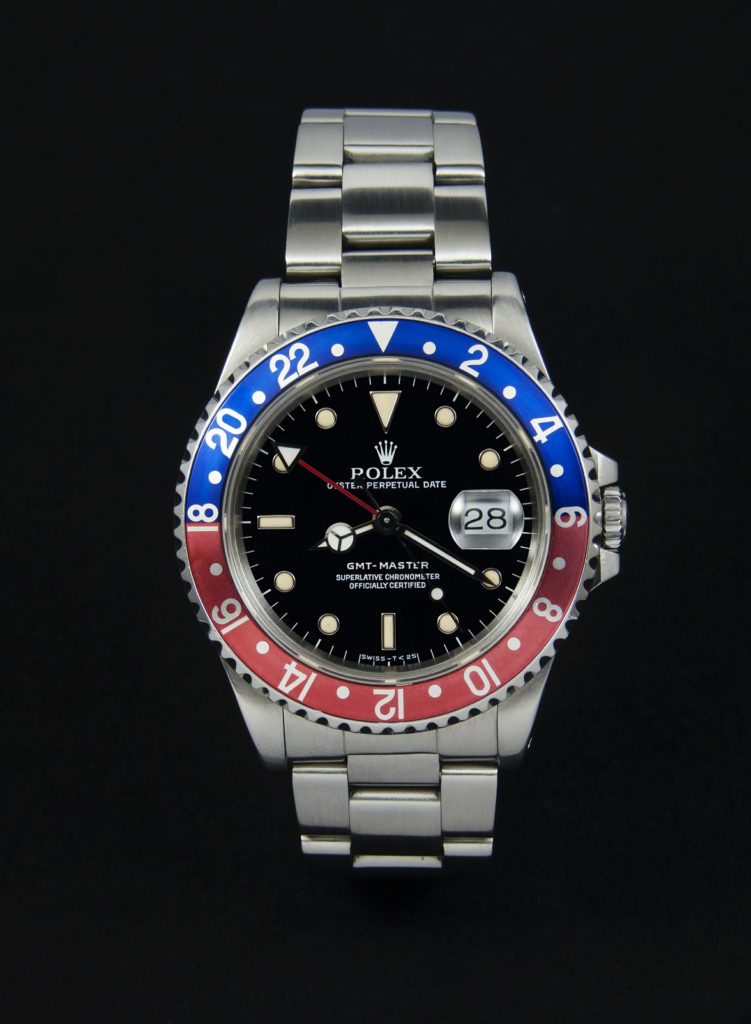Prefer to listen to us read this article? Click below. Remember to consult a doctor about all issues related to health in this article!
If you’re like most people, you probably focus on a watch’s exterior appearance. You ensure that your watch is fashionable. However, it’s equally important to consider the watch’s insides. And if you’re one of those types who like to take a peek beneath the surface now and then, you may be curious about watch batteries. Do chemicals do they contain? Are the health risks and hazards associated with exposure to these chemicals?
Watch batteries contain either mercury, lithium, or silver oxide. However, the sale of mercury batteries is banned in most countries. Today, lithium is the most common chemical in watch batteries. It’s really important to consult a doctor in relation to health issues before acting on health and safety information contained in this article.
It’s crucial to know the chemicals in your watch batteries and how these chemicals can affect you. This article looks at various types of chemicals you can expect to find in watch batteries and how they can affect your health.
What Metal Are Watch Batteries Made Of?
Watch batteries are made of one or more metal alloys. The most common metals in watch batteries include Silver Oxide, Mercury, and Lithium.
Silver Oxide
Silver oxide is the primary chemical used to make alkaline watch batteries. Silver has a low toxicity level and high resistance to corrosion from water seeping into your battery compartment. These chemicals are only harmful if they leak. Therefore, it’s crucial to ensure your watch battery compartment is sealed.
When it comes to silver oxide batteries, you have two options; potassium hydroxide or sodium hydroxide. Potassium hydroxide batteries are often used in LCD watches that have backlights, and they function best in low temperatures. On the other hand, sodium hydroxide watches are commonly used in digital watches.
Mercury
Mercury is often used in watch batteries because it prevents the build-up of internal gases that cause the battery to expand and burst. The chemical produces a stable environment that allows the batteries to last longer before they need to be replaced.
Mercury is highly toxic, though, so some companies have phased out its use in watch batteries in recent years due to public concern about toxicity from mercury exposure.
Lithium
Lithium batteries come in more varieties of types. The main difference between the various types is the cathode material. You’ll find six types of lithium batteries on the market. These include:
- Lithium Manganese Oxide
- Lithium Cobalt Oxide
- Lithium Iron Phosphate
- Lithium Nickel Manganese Cobalt Oxide
- Lithium Titanate
- Lithium Nickel Cobalt Aluminum Oxide
Lithium Manganese oxide is the most popular among watch batteries. This material is safer to work with and not as volatile. It produces a higher voltage than other types, though it also has the shortest life span of all lithium batteries (two to three years)
Source: Great British Watch Company
What Toxicity Levels Do Watch Batteries Have?
So, how toxic are these chemicals, and how do they affect your health? It’s crucial to understand the difference in toxicity levels between the different types of watch batteries on the market. This way, you’ll be able to make the best choice.
Not to mention, you’ll know how to handle them safely and dispose of them properly. Here’s what you should expect from the various chemicals you’ll find in most watch batteries.
Mercury
Mercury batteries contain mercury, a toxic heavy metal that can affect the brain, kidneys, lungs, and other organs if ingested or inhaled in large quantities. Large exposures to this chemical have been linked with neurological effects, including tremors, memory loss, and fatigue, as well as kidney damage.
These severe health risks are the primary reason mercury batteries are being phased out of most consumer goods. It’s best to steer clear of all mercury batteries.
Silver Oxide
Silver oxide watch batteries are non-toxic under normal circumstances. However, they can cause severe gastrointestinal tract irritation with nausea, vomiting, and possible burns if swallowed..
If inhaled, this chemical can irritate the respiratory tract with symptoms like burning in the throat and nose, pulmonary edema, wheezing, coughing, and shortness of breath, among other effects.
Silver dioxide contact with the eyes or skin may cause severe irritation. Generally, if handled correctly, silver oxide batteries are safe.
Source: FSC Image
Lithium
Lithium-ion batteries and various products containing lithium-ion batteries are often found in many consumer electronic devices. Lithium-ion batteries don’t contain mercury but lithium metal, cobalt oxide, and cathode materials that can be toxic to humans when exposed or ingested.
If a battery is punctured or damaged, it will release its cells’ chemical contents, which could cause serious health problems, including but not limited to reproductive harm and cancer.
These effects result from some of the chemicals found in lithium-ion batteries, such as lithium, cobalt oxide, and nickel.
Lithium-ion batteries are not the only types of batteries that contain these chemicals, which may cause health problems. Other battery chemistries, including nickel-metal hydride (NiMH) or small button cells, also use some of those same hazardous ingredients.
That is why it is important to be careful when removing these batteries from products. If you’re unsure how to dispose of a watch battery properly, make sure that the store you purchased the product from can recycle it for you or contact your local government recycling program if they don’t have special instructions for electronics and batteries.
Source: Adam Equipment
Silver Oxide vs Lithium Watch Batteries: Which is Safer?
Generally, Silver Oxide watch batteries are the safer option compared to Lithium batteries. These batteries are safe to use under normal circumstances and don’t pose as much risk as Lithium batteries.
That said, both kinds of these batteries should not be exposed to excessive heat or flames since they can cause a fire and explode. If the battery leaks due to damage or overheating, it’s advisable to avoid direct exposure to the chemicals. If you’re unsure how to handle the battery, it’s best to contact a professional.
Source: Large
Wrapping Up
If you were wondering which chemicals you can expect to find in watch batteries, now you know. The top three chemicals you’ll find are mercury, silver oxide, and lithium. Mercury is the most toxic of these three chemicals and has been banned in most countries.
On the other hand, Silver Oxide and Lithium are safer options. Still, they need to be handled carefully because they pose severe health risks if they come into contact with your skin, eyes, and gastrointestinal tract (if swallowed).







